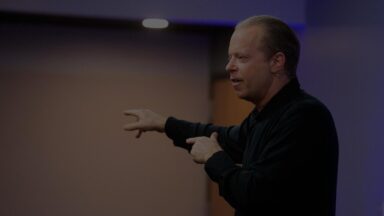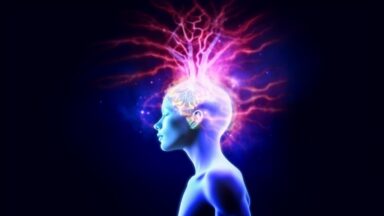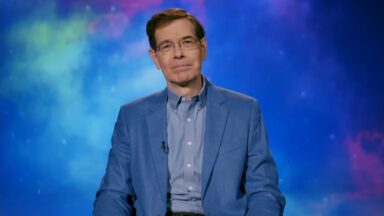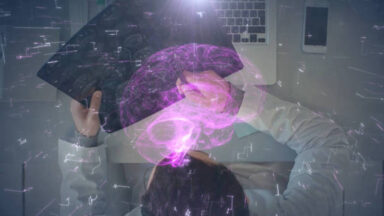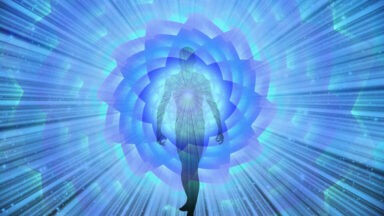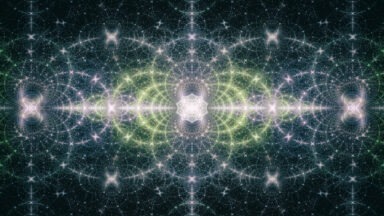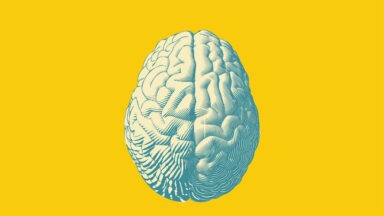Time Slice Theory: Is Consciousness as Fluid as We Think It Is?

Our brains have all sorts of shortcuts to help us experience reality more efficiently. For example, you’ve probably seen one of those tests circulating the internet with a sentence full of mispselled wrods taht dno’t raelly inhbit yuor raeding speed, as long as the frist and last lettres in evrey word are unchanged. This phenomenon may be part of a conceptual explanation known as the Time Slice Theory of consciousness, suggesting our minds stitch together a narrative of individual frames, rather than a continuous, live stream.
The paper was published on PLoS-biology by scientists Michael Herzog of the École Polytechnique Fédérale de Lausanne, and Frank Scharnowski of the University of Zurich in Switzerland. Their theory says our brains process reality in individual moments, or what they call percepts, arising in 400 millisecond intervals. These percepts are then stitched together and rendered as a continuously flowing sequence of reality that makes sense to us – much like a movie shot in high definition.
But instead of watching the movie and making judgements as we observe them, our unconscious mind reviews individual images, processes them in an abstract order, and makes subjective judgements based on heuristics from past experience. It then translates those judgements into an apparently fluid narrative, allowing you to efficiently process reality.
Time Slice Theory of Consciousness & Perception
Time slice theory says we only process reality after 400 millisecond intervals, and that there is minimal to no conscious observation between those frames; our brains only collect sensory information at discrete time-points. It is also within this period that our minds frantically work to make sense of it all.
It’s mind-boggling to think our unconscious can work so quickly, but our brains are fascinatingly powerful processors. It’s believed the mind calculates roughly 1014-1016 processes per second, or somewhere between 1 and 100 quadrillion calculations per second. The average computer functions at about half that speed.
So, what exactly happens during that unconscious judgement phase? According to Time Slice Theory, the brain processes specific features of objects, such as color and shape, quasi-consciously or unconsciously with high resolution. Within this moment there is no sense of linear time, in fact, changes in duration or even color aren’t processed. It then draws the necessary connections and stitches them together to pass off to the conscious stage.
Sometimes this period happens instantaneously and other times it takes longer, depending on the complexity of the information being fed to it. Occasionally, this leads to reactions based on false judgements, such as in fight-or-flight instances, but these instincts are naturally made to surpass the logical decision-making process, usually for survival reasons.
For instance, if someone jumps out of a closet and scares you, your unconscious perception recognizes an ostensible threat of unexpected, encroaching movement, in turn telling you to move or attack the stimulus without logical consideration.
Schizophrenics often report a slowed integration process in which the window of logical deduction takes longer and their stream of perception is fragmented.
This seems to parallel Robin Carhart-Harris’ entropic brain hypothesis regarding the Default Mode Network, the region of the brain believed to be responsible for the ego. His theory says that during a psychedelic, creative, or psychotic experience the mind sifts through more possible outcomes than it normally would, drawing from a number of seemingly incorrect conclusions to make sense of what it’s observing; with psychedelics this is what results in visual hallucinations.
Our brains can also draw false conclusions about reality while being completely aware of them. One such instance is known as the Cutaneous Rabbit Illusion; a physical deception in which a syncopated tapping of the wrist and elbow tricks the mind into feeling as if a tiny, invisible rabbit is hopping up the arm. This illusion happens because the mind infers the sensation in between the two areas of stimulation.
Listen to Alan Watts discuss our confusing perception of time:
A Similar Buddhist Theory of Consciousness
In the third century BC, the Abhidharma Buddhist School first recorded the concept of our brain’s discrete perception of reality. Their scripture refers to the threshold between conscious and unconscious awareness as the “Mind-door,” where we internalize information received through our sensory faculties.
The Mind-door characterizes the mind as the creator of subjective experience which forms the basis of memory and thought, and subsequently the micro-judgements that form the mind’s narrative. They considered the Mind-door to be our sixth sense, transcending time and making purely conceptual judgements.
Abhidharma Buddhists believed when an image reached this threshold, the mind would switch from inactive mode to any of the five-sense processes, based on whichever faculty was appropriate.
These discrete moments were referred to as dharmas – different from the teachings of the Buddha known as the dharma – used to describe experience encountered through the senses. But the dharmas weren’t simply objective experience, rather they are the product of “rapid consciousness that arise and cease in sequential streams, each having its own object, and that interact with the five externally directed sensory modalities of cognitive awareness.”
These dharmas are also described as “psycho-physical events with diverse capacities by means of which the mind unites and assimilates a particular perception, especially one newly presented, to a larger set of ideas already possessed, thus comprehending and conceptualizing it.” Sounds a lot like the Time Slice dynamic.
But Scharnowski and Herzog admit that their theory is purely conceptual and that the argument between a stream of consciousness theory and Time Slice theory remains unsettled. And while theirs is an interesting thought experiment into the way our brain processes consciousness, it doesn’t necessarily do much to answer the hard problem of consciousness itself – that is, what is consciousness?
The answer to that question remains to be understood if it can be understood in this realm at all. For more hints to help you answer such a primordial, existential question watch the documentary PHI: The Evolution of Consciousness:
How to Remember Your Past Lives: 3 Ways to Access Past Life Memories

Sometimes life feels familiar in ways that are hard to explain. You meet someone and feel you’ve known them forever. Or you travel somewhere new and something deep inside stirs, like a memory you can’t quite place. Maybe these are traces of memories of past lives, or maybe they’re just intuition. Either way, they’re worth paying attention to.
Patterns often repeat themselves. Unexplained fears. Sudden talents. Relationships that circle back to the same lessons. These moments might be echoes from a previous life still influencing your present life.
Exploring past life experiences is not only about curiosity. It can be about understanding how your soul’s history continues to shape who you are. You might not find clear answers at first. Insights rarely arrive as complete stories. They show up in fragments, symbols, and emotions. Sometimes they make sense only later.
Table of Contents
- Can You Access Past Life Memories?
- How Past Lives Might Shape Your Present Life
- Signs You Might Have Lived Before
- Three Ways to Explore Past Life Memories
- Making Sense of What You Find
- The Story of Matías De Stefano
- Living With Past Life Insights
Can You Access Past Life Memories?
The idea of reincarnation suggests that human beings live more than one lifetime, each one leaving behind energetic and emotional imprints. Most people don’t consciously recall memories of previous lives, but certain practices can help open the door to them. Techniques like deep meditation, past life regression, or exploring the Akashic Records can reveal glimpses that feel older than this lifetime.
For some, these insights appear as flashbacks, vivid dreams, or waves of emotion. For others, it’s just a subtle pull toward a person, a place, or even a time period. In my experience, it’s unpredictable. You can’t force it, and that’s often what makes it meaningful.
The process takes patience. Sometimes fragments come together slowly, piece by piece. You might feel a sensation before you see an image, or recognize a lesson before you know its origin.
How Past Lives Might Shape Your Present Life
Emotional patterns often carry forward from former lives. Dr. Ian Stevenson, a psychiatrist who studied young children recalling memories of past lives, documented cases where birthmarks matched fatal injuries described in these memories. Whether you see this as scientific or spiritual, it’s hard to ignore the consistency of such reports.
These imprints may not prove anything, but they do suggest continuity between lives. A certain fear, gift, or attraction could reflect something unresolved or unfinished from a previous life. Recognizing these connections can bring clarity and healing in current life.
I once worked with someone who had a deep fear of the ocean. Through past life regression therapy, guided by a trained hypnotist, she recalled a drowning incident from what felt like another lifetime. The memory came in pieces, more feeling than image. Still, acknowledging that connection helped her let go of the fear over time. Experiences like this show how understanding past life experiences can release something held deep in the subconscious.
Signs You Might Have Lived Before
Even if you never access vivid memories, signs of former lives can appear in subtle ways:
- A powerful connection with someone you’ve just met
- Fascination with a specific era or culture
- Unexplained fears or emotional triggers
- Skills or talents that seem to come naturally
- Dreams or visions that feel oddly specific
Most people notice just one or two of these patterns. Others find the signs everywhere once they start paying attention. Sometimes a single clue opens a path toward remembering more.
In my experience, recognizing a familiar emotion or attraction can be just as revealing as a full flashback. It’s less about proving a past and more about noticing what the soul is trying to show you now.

Three Ways to Explore Past Life Memories
1. Deep Meditation
Deep meditation is one of the simplest ways to open the mind to memories of past lives. The key is to relax and observe whatever comes up without judgment. Images, sensations, or feelings may surface. Some might seem random. Others might carry a weight that feels ancient.
Before beginning, it can help to set a quiet intention, such as:
“I’m open to seeing what my soul wants me to understand.”
Then you simply allow the experience. Don’t chase it or analyze too soon. In my experience, the most authentic insights from former lives come gently, not dramatically. Even a fleeting moment of recognition can hold meaning.
2. Past Life Regression Therapy
Past life regression therapy uses relaxation and visualization to uncover memories of previous lives stored in the subconscious. A trained hypnotist guides you into a meditative state, helping you move beyond surface thoughts. Some people experience vivid scenes or sensations that feel like a flashback to another existence.
Whether these experiences are literal or symbolic, they often reveal emotional truths. They can explain patterns that don’t make sense in your present life or help resolve fears that seem to have no origin.
I once met someone who had always struggled to speak publicly. During past life regression, she recalled a lifetime where her voice had been silenced by strict authority. That realization gave her the courage to use her voice more freely in her current life. Even if symbolic, the experience carried emotional truth.
3. Exploring the Akashic Records
The Akashic Records are said to contain every thought, action, and experience the soul has ever had. Accessing them, either independently or through a reader, allows you to explore lessons across past lives and recurring patterns of growth.
When people tap into these records, they often describe sensations of recognition more than visual imagery. Insights come as feelings, intuitive words, or brief impressions. You might discover why certain people or challenges keep reappearing, or how your soul’s history is guiding your spiritual awakening.
Even a few minutes of connection can shift how you see your current life. These insights don’t have to be dramatic to be meaningful.
Integrating What You Discover
Exploring past life memories is not about getting lost in the past. It’s about using what you find to better understand your choices now. A glimpse into a previous life might explain an ongoing struggle or illuminate a hidden strength.
In some cases, the lesson might be an emotional release. In others, it could be creative inspiration or reconciliation. What matters most is how the experience influences your perspective in the present life.
It helps to write down what you recall after meditation or regression. Don’t try to label everything as fact or fiction. Treat it as information from your inner world, something your soul is offering for reflection.
The Story of Matías De Stefano
Spiritual teacher Matías De Stefano has captivated audiences with his extraordinary ability to recall multiple past lives since childhood. Unlike those who access memories through regression, Matías’ recollections emerged naturally and in vivid detail, spanning ancient civilizations, planetary histories, and metaphysical dimensions.
Through his Gaia podcast and original series The Journey of Remembering, Matías shares how his memories shaped his understanding of the universe and his role in the collective spiritual awakening. His story offers profound insight into how connecting with the memories of past lives can guide us toward purpose, unity, and a deeper remembrance of who we truly are.
Just as with Matías’s experience, remembering past lives invites us to explore the continuity of consciousness and to see life as an unfolding journey rather than a single chapter. Whether through meditation, past life regression, or the Akashic Records, these methods can open the door to self-discovery and healing.
Ultimately, the value of these experiences lies not in proving their accuracy but in how they help us grow, evolve, and live our present life with peace, clarity, and a renewed sense of purpose.
Living With Past Life Awareness
Understanding past life experiences and exploring the soul’s history is not about proof or persuasion. It’s about awareness. Insights from past lives can explain repeating patterns, clarify emotional attachments, or simply remind you that growth is continuous.
Whether through deep meditation, past life regression, or the Akashic Records, each method opens a doorway to reflection. Sometimes that reflection is subtle, almost imperceptible. Other times it feels profound, as if you’ve remembered something essential about who you are.
Ultimately, remembering past lives isn’t about living in the past. It’s about carrying forward what matters most into the present life. Each glimpse, each small understanding, becomes part of how you live more consciously now.







